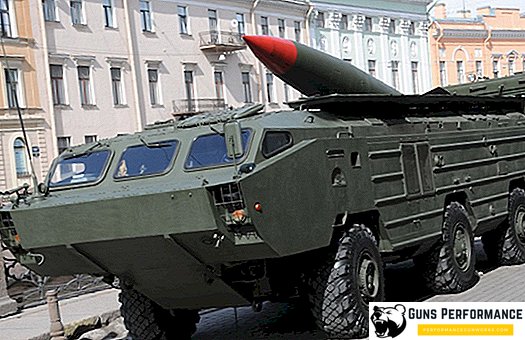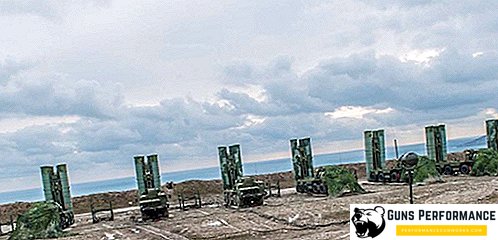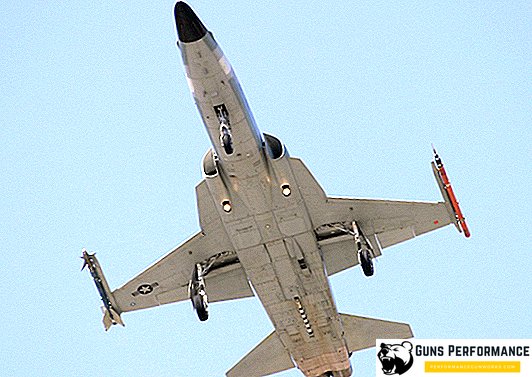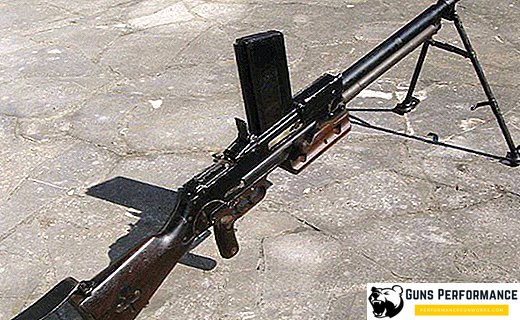The types of modern missile weapons are quite numerous and varied. Strategic missiles are designed to hit targets that are at a distance of tens of thousands of kilometers, and usually carry a nuclear charge. However, there are other missiles whose mission is to destroy important objects located in the immediate rear of the enemy. Such missiles are called tactical and operational-tactical. They may also have a nuclear warhead (CU), but even with a conventional warhead, such missiles are a formidable weapon that can significantly change the situation in the local area of an armed conflict.

In the USSR, they were able to make not only strategic intercontinental missiles capable of destroying entire states. Since the 50s of the last century, Soviet designers have been developing tactical and operational-tactical missile systems. Names such as "Moon", "Oka", "Elbrus" (this is the famous "Scud") were well known to the likely adversary. One of the most successful Soviet developments in this field was the tactical missile system "Tochka" (and later "Tochka-U").
"Point-U" and is now in service with the Russian army, in addition, this rocket is used in the armies of several other countries of the world.

History of creation
Work on the creation of the missile system "Tochka" began in 1968. That year saw the light of the decision of the USSR Council of Ministers, according to which the chief contractor was appointed by the Mechanical Engineering Design Bureau (Kolomna), its leader at that time was the talented Soviet weapons designer Invincible.
A new missile system was created to destroy important targets in the tactical rear of the enemy. The accuracy of the new rocket was declared right in the title of the project - “Point”.

In the same period, other enterprises participating in the new project were identified: the Bryansk Automobile Plant was to manufacture the chassis for the new complex, the Central Research Institute of Automatics and Hydraulics was developing the control system, and the Barricades software was the launcher.
Tests of the new missile system began three years later, and in 1973 its mass production began, but the Point was adopted only in 1976. The complex was equipped with 9M79 missiles, which could carry two types of combat units: high-explosive and nuclear fragmentation. The range of the new missile was 70 km, and the probable deviation from the given point was 250 meters.
Immediately after the reception of the Tochka complex into service, work began on a new modification of the rocket, which was planned to be equipped with new electronics. The new rocket was equipped with a passive homing head and received an index "Tochka-R". However, the new missile system was never adopted.

In 1984, work began on the modernization of the complex "Tochka". The military wanted to improve its basic characteristics, namely, the missile’s range and its accuracy. Tests were conducted from 1986 to 1988, and a year later, "Tochka-U" was put into service.
The advanced complex can shoot and rockets "Point".
The result of the modernization of the complex was a significant improvement in its basic characteristics. The range of target destruction increased to 120 km, and the accuracy of the rocket also significantly improved - the probable deviation of the rocket from the target decreased to 100 meters. New missiles have improved navigation and guidance system.

Combat use
Missile systems managed to take part in several local conflicts. The Russian army actively used "Tochka-U" against the separatists during both Chechen campaigns.
Also, these complexes were used by the Russian army against the Georgian troops during the war in 2008.

The Tochka-U used the Ukrainian army very actively and effectively during the conflict in the east of Ukraine.
Yemeni Hussites hit "Point-U" on the camp of Saudi troops and their allies. There is information that as a result, more than a hundred soldiers died, several dozen armored vehicles and even several helicopters were destroyed.

Description of the complex
The “Tochka-U” missile system was designed to destroy single, group, as well as areal targets in the tactical rear of the enemy, which are of considerable importance: command posts and communications centers, aircraft and helicopter parking areas, ammunition and fuel depots.
The complex includes:
- 9M79-1 missiles, on which various types of combat units can be mounted;
- launcher;
- transport vehicle;
- transport-loading machine;
- test machine;
- machine maintenance;
- training facilities;
- set of arsenal equipment.
"Point-U" is a very universal tool that can be used in any conflict and for solving various problems. On the rocket, you can install different types of combat units: high-explosive, cluster, warheads, containing various types of chemical or biological weapons. Also, the rocket can be used to deliver nuclear weapons (up to 100 kt).

The main element of the complex is a 9M79M (9M79-1) solid propellant ballistic missile, which has one stage. The rocket is controlled throughout its flight, from launch to hitting the target.
The combat unit is not separated at the final stage of the flight; moreover, the engine runs from launching a rocket to meeting it with a target. It has only one mode of operation and during its work burns more than 800 kilograms of fuel.

The rocket body consists of the head and rocket parts. It is made of special aluminum alloy. The head part is fixed with six bolts.
The location of the rudders and aerodynamic surfaces of the X-shaped rocket. The rocket part consists of the tail, engine and instrument compartments and aerodynamic surfaces. In its front part is the instrument compartment, and in the middle part - the engine compartment. In the tail section there is an engine nozzle, a power source, as well as part of the control system. There are lattice aerodynamic control surfaces.
In total, the rocket has four trapezoidal wings, four gas-jet rudders and the same aerodynamic rudders. In the stowed position, all the wings fold. Immediately after launching, the rocket is controlled by gas-jet rudders, and then the aerodynamic lattice helms come into play.

A solid fuel engine consists of a combustion chamber and a nozzle block, with a fuel charge and ignition system. Alloyed steels, graphite-based materials and tungsten alloys are used to manufacture the engine.
The fuel charge is a monoblock, the main combustible material of which is aluminum powder, and the binder is rubber. Ammonium perchlorate acts as an oxidizing agent. While the engine is running, the fuel charge burns at an even speed, providing a constant area of burning from the very start to hitting the target.
The ignition system consists of two igniter and igniter. During start-up, the igniter ignites the igniter, which, in turn, ignites the fuel charge.

The onboard rocket control system is inertial, it is equipped with an onboard computing system and a 9B64 gyroscope, which ensures high accuracy of target destruction. Also in the onboard control system includes sensors of angular velocity and acceleration.
The missile is controlled on the entire ballistic flight path, unlike earlier models of Soviet tactical and operational tactical missiles, in which control took place only up to a certain point (usually before reaching a given speed).
When approaching the target, a rocket makes a maneuver that provides an almost straight angle for the charge to meet the target. The explosion of the high-explosive warhead "Point-U" occurs at a height of 20 meters, which enhances its striking effect. Air blasting is done with a laser sensor.

The Tochka-U missile system is very mobile and has a good speed thanks to the six-wheel all-wheel drive 9P129, on which it is made. On the highway, it can reach speeds of up to 60 km / h with a full combat load. The machine can overcome water obstacles at a speed of 10 km / h.
The launcher electronics fully independently conducts all the necessary manipulations to start, the crew’s intervention is minimal. Flight data is entered in the horizontal position of the rocket through a special window in its body. To calculate the mission and the flight trajectory, space reconnaissance and aerial photographs are used.

The launch of the rocket can be made from almost any site, the deployment speed when shooting from the march is 16 minutes, and from the “readiness No. 1” position - only 2 minutes. There is only one requirement: the target must be in the sector of 15 degrees from the longitudinal axis of the rocket.
The launcher can leave the launch site in two or three minutes. The rocket is displayed at the launch angle only fifteen seconds before launch. This greatly complicates the work of enemy intelligence.
The crew of the launcher consists of four people: the head of the crew, the driver, the senior operators and the operator.
The complex’s missiles are delivered to the troops already assembled and can be stored for ten years (in non-nuclear equipment). The rocket is placed on the launcher using a transport-loading machine, which is also based on the BAZ-5922 chassis. In a hermetic car body there are two rockets. For loading on the launcher, the transport-charging vehicle is equipped with a special crane. Charging can be carried out on any, even on unequipped sites.

The loading process takes about twenty minutes.
In addition to the transport-charging machine, the complex also includes a transport vehicle that does not have loading equipment.
Despite its age, the Tochka-U missile systems are not planning to be removed from service. Perhaps over time, when the industry will be able to manufacture more modern Iskander missile systems for the Russian army in sufficient quantities.
Specifications
Below are the tactical and technical characteristics of the tactical missile system "Tochka".
| Total information | |
| Type of | Tactical |
| Firing range, km: | |
| minimal | 15 |
| maximum | 70 |
| Types of warheads | simple nuclear |
| Terms of Use: | |
| temperature, ° С | from -40 to +50 (up to 6 hours - from -60 to +40, from +50 to +60) |
| wind speed, m / s | up to 25 |
| Air transportability | Yes |
| Self-propelled launcher | |
| Crew | 3 |
| Base | wheel, 6x6 |
| Mass, t: | |
| empty | 17,8 |
| curb | 18,145 |
| Clearance, mm | 400 |
| Engine | diesel 5D20B-300 |
| Power, l. with. | 300 |
| Maximum speed, km / h: | |
| on the highway | 60 |
| on the ground | 40 |
| on the road | 15 |
| afloat | 8 |
| Power reserve, km | 650 |
| Time, min: | |
| preparation for launch from readiness number 1 | 1-2 |
| launch preparation from march | 16-20 |
| firing position | 1,5 |
| Interval between starts, min | 40 |
| Transporting machine | |
| Crew | 3 |
| Base | wheel, 6x6 |
| Curb weight, t | 18,15 |
| Clearance, mm | 400 |
| Engine | diesel 5D20B-300 |
| Power, l. with. | 300 |
| Maximum speed, km / h: | |
| on the highway | 60 |
| on the ground | 40 |
| on the road | 15 |
| afloat | 8 |
| Power reserve, km | 650 |
| Launcher recharge time, min | 19 |
| TTX missiles 9M79 | |
| Type of | solid, single-stage |
| Types of warheads | nuclear, high-explosive, cluster frag |
| Control system | autonomous, inertial |
| Governing bodies | gas dynamic and aerodynamic steering wheels |
| Length, mm: | |
| rockets | 6400 |
| warhead | 2325 |
| Weight, kg: | |
| launch rockets | 2000 |
| warhead | 482 |
| fuel | 926 |
| Fuel | ДАП-15В |
| Engine thrust, kgf | 9788 |
| Engine running time, s | 18,4-28 |
| Trajectory height, km | » 6-26" |
| Flight time, sec | 43-163 |












